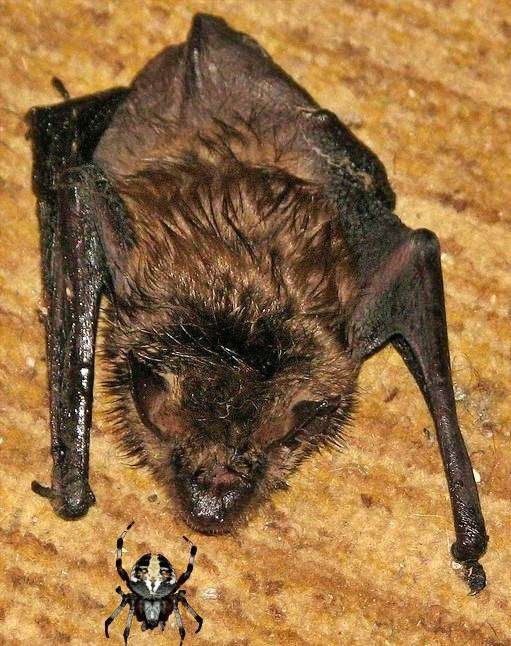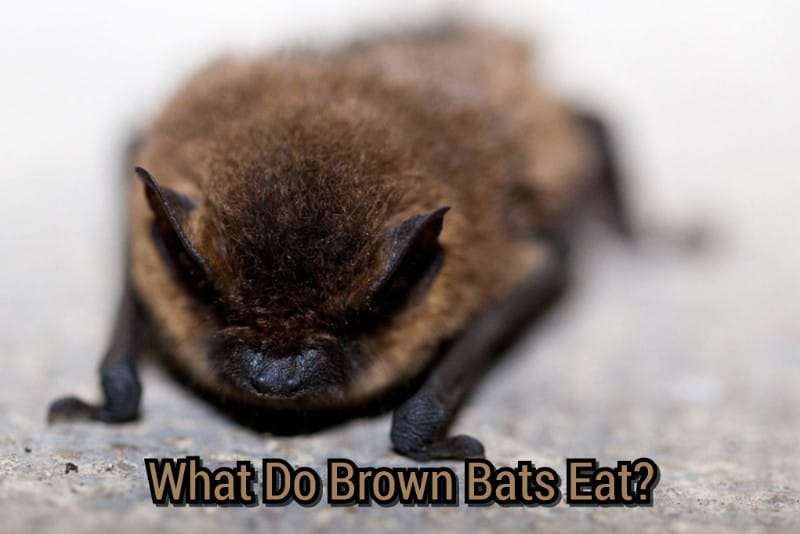The term brown bats do not represent any single species but a generic name for multiple species. The three major ones are the Little Brown Bat, the Argentine Brown Bat, and the Big Brown Bat. Due to their immense ecological importance, let us understand their role by diving into today’s article, What do brown bats eat?
To answer the question, Brown Bats are primarily insectivores. Argentine Brown Bats hunt usingecholocation near water bodies and eat moths, butterflies, and other beetles. Big Brown Bats are insectivores, too, and feed mainly on beetles, cockroaches, caddisflies, stone flies, and several others. Little Brown Bats follow a similar diet, mainly comprising a wide range of flying insects, such as spiders, caddisflies, moths, different hoppers, and mosquitoes. They forage at night by echolocation.
Later in this post, What do brown bats eat? We are going to elaborate further on their feeding habits. So, without further delay, let’s get going with this article.
What do brown bats eat?
All Brown Bats are insectivores and hunt for prey using echolocation. They catch mostly flying insects and eat them up while staying airborne. All Brown Bats share a lot in common in their diet. They mostly feed on beetles, moths, butterflies, and agricultural pests like cucumber beetles, stoneflies, caddisflies, and hoppers of various species. Their feeding mostly begins at night, from dusk, and continues till daybreak.
What do Little Brown Bats eat?
This mouse-eared microbat, also known as the tiny brown bat or small brown myotis, is an endangered bat species in North America. Its petite body is covered with silky fur that ranges in color from brown to golden.
The small brown bat can be found in much of North America. This species used to be highly common, but white-nose syndrome, a new fungal disease, has caused dramatic losses, especially in eastern North America. It is a tiny species of bat, typically weighing less than half an ounce.
The nocturnal tiny brown bat sleeps during the day and forages at night. Therefore, they have to rely on insects that buzz around at night. What brown bats eat are mostly arthropods.
Arthropods are organisms with an outer exoskeleton and jointed appendages. In general, they include all insects. Little brown bats not only consume insects but also, on certain occasions, spiders.

Mosquito comprises quite a large portion of their diet, with several colonies having more than 71% of their guano mosquito traces. Apart from this, other insects that make up the major rest part of their diet are flies, ants, moths, tree bugs, mayflies, caddisflies, hoppers, spiders, and insects belonging to Neuroptera like lacewings, etc. The diversity in their diet is also a significant factor in their widespread distribution.
What do Brown Bats eat in captivity?
The green plant matter found in some insects’ digestive tracts provides some of the vitamins and minerals that insectivorous bats need. Although the nutritional value of insects varies from one species to another, they are often on a high-protein diet.
Bats that are kept in captivity should be taken well care of, and it is highly essential to supply them with the proper nutrition. Food should be balanced and must be able to supply them with just the right nutrition levels, neither much nor less. Insects feed on plants, which, when fed to bats, give them the required vitamins and minerals indirectly. By providing on several insect varieties, bats can fulfill their nutritional requirements.
About Big Brown Bats:
Big Brown Bats are fed on a variety of insects. Cucumber beetles are a major agricultural pest and feed on soybeans, corn, spinach, etc. They make up quite a portion of Big Brown Bats’ diet in captivity.
Stinkbugs (feed on soybeans and several orchards), Leaf hoppers (feed on alfalfa, tomatoes, vineyards, etc.), and also live mealworms (with added supplements) serve as food for captive bats.
Big brown bats typically eat crickets (Acheta domesticus) as part of their natural diet in the wild (E. fuscus). Various bug supply stores supply house crickets.
Because crickets are pickier eaters and one cannot supplement them with extra nutrients as efficiently as mealworms, their diets are less nutrient-dense than mealworm diets.
Conservationists give Little Brown Bats quite a similar diet, with mealworms making up a large part of it. Midges, Sawflies, Mosquitoes, and Mayflies are some of the common insects in a Little Brown Bat’s diet. A live mealworm diet is accompanied by several vitamins and fatty acid supplements to take care of the overall nutrition of the animal.
How to feed?
Bats in captivity can be handfed in the initial days, while self-feeding should also be focused on. The number of mealworms a bat in captivity will eat is influenced by several variables, such as the species, the animal’s overall health, its nightly activity (i.e., if it is flying), the season, and the ambient temperature.
Non-self-feeding bats need to be fed twice a day, in the morning and the evening. Ideally, we should space meals out by 12 hours or more. Smaller species weighing between 3-10 g may only consume 5 to 10 mealworms every feeding, while those weighing between 10-20 g commonly consume 10 to 20 one-inch mealworms.
At each feeding, large species weighing 30-70 g can consume 5 to 10 massive mealworms. These mealworms can be fed using forceps.
Some conservation centers also feed bats with soft foods. These are nothing but mealworms, along with required supplements, blended in a mixer and then made into a paste. Using a syringe, this paste is fed to the bats.
Here, we come to the end of this article, What do Brown Bats eat? Keep a close watch on our website for many more bat-related articles.
References
Standards and Medical Management for Captive Insectivorous Bats- Feeding Adult Bats- Chapter 7
Also Read:

A zoology student turned writer. Nature has always been a magnet to me, and to unearth some of its secrets through my articles is my prime intention. If not engaging myself with nature and anime content, you can always find me going through some Bengali classics or filling the air with some soulful Tabla beats. An artist, trying to throw some colors to my blank canvas of life.
